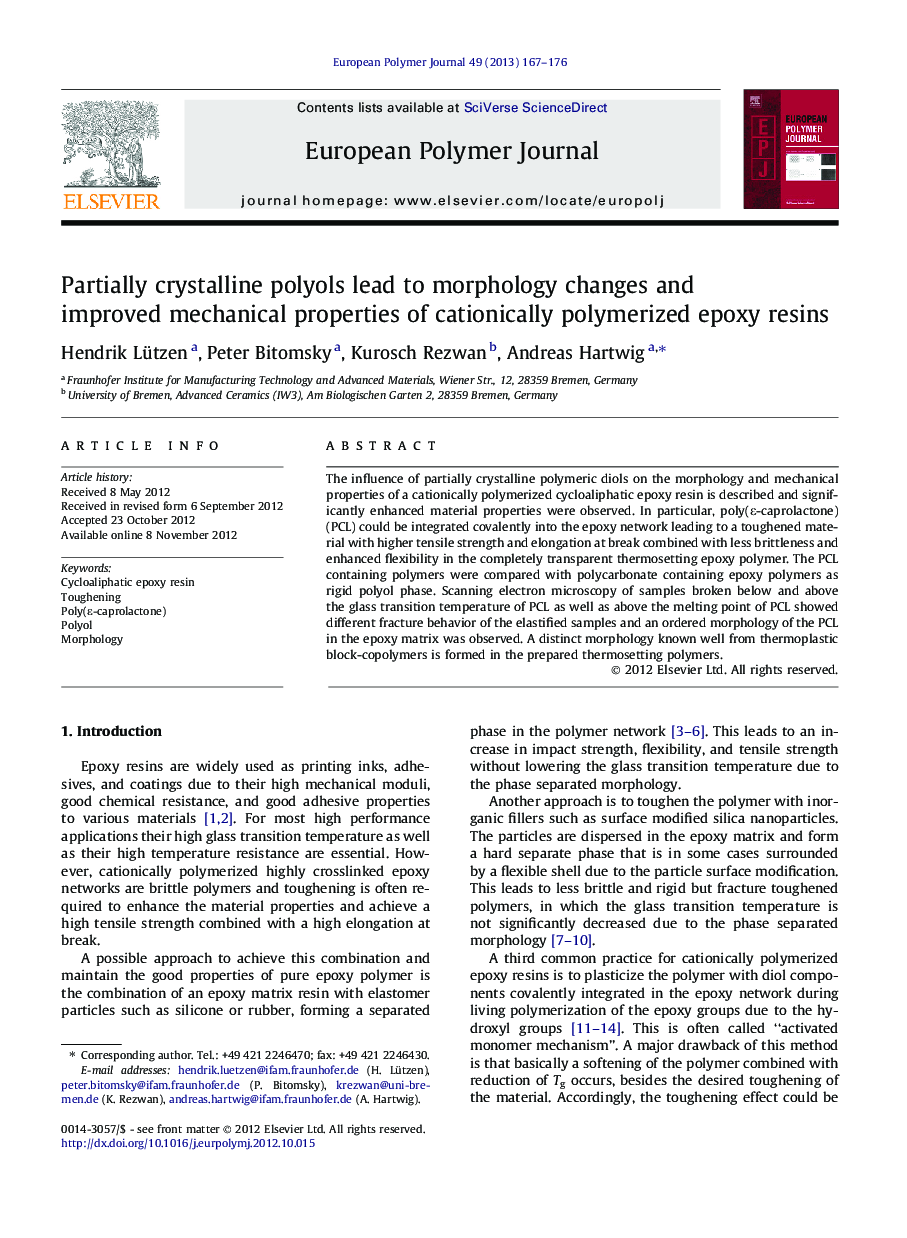| Article ID | Journal | Published Year | Pages | File Type |
|---|---|---|---|---|
| 1395887 | European Polymer Journal | 2013 | 10 Pages |
The influence of partially crystalline polymeric diols on the morphology and mechanical properties of a cationically polymerized cycloaliphatic epoxy resin is described and significantly enhanced material properties were observed. In particular, poly(ε-caprolactone) (PCL) could be integrated covalently into the epoxy network leading to a toughened material with higher tensile strength and elongation at break combined with less brittleness and enhanced flexibility in the completely transparent thermosetting epoxy polymer. The PCL containing polymers were compared with polycarbonate containing epoxy polymers as rigid polyol phase. Scanning electron microscopy of samples broken below and above the glass transition temperature of PCL as well as above the melting point of PCL showed different fracture behavior of the elastified samples and an ordered morphology of the PCL in the epoxy matrix was observed. A distinct morphology known well from thermoplastic block-copolymers is formed in the prepared thermosetting polymers.
Graphical abstractFigure optionsDownload full-size imageDownload as PowerPoint slideHighlights► Layered morphology formed in crosslinked epoxy resin similar to block copolymers. ► Structure only visible in SEM if samples are broken at low temperature. ► Crystallization in thermoset leads to hardness increase. ► Concomitant improvement of strength and elongation of a cycloaliphatic epoxy resin.
